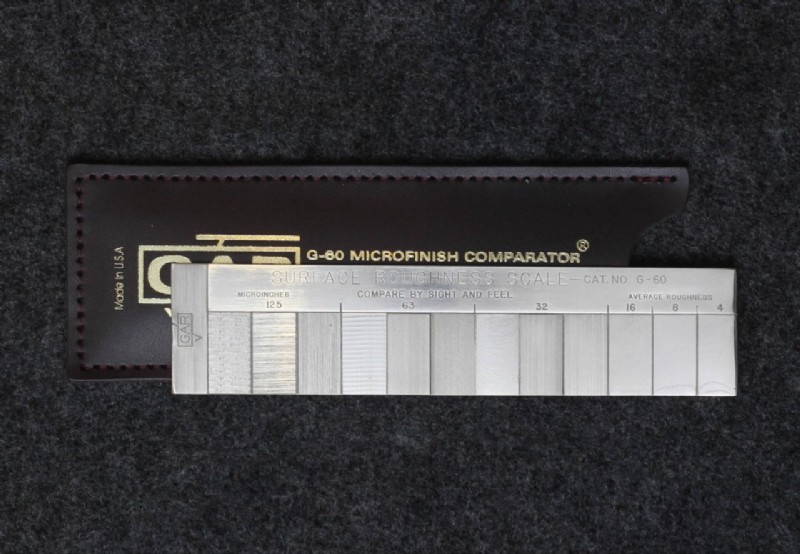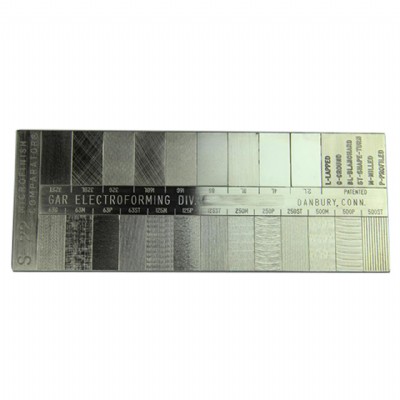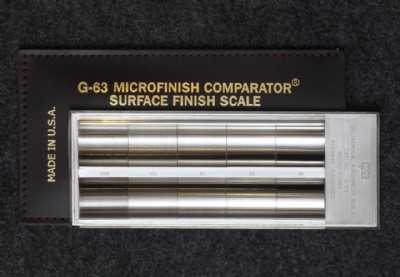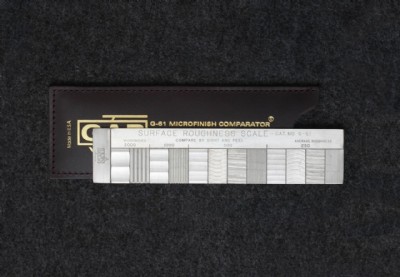- Twelve replicated machined surface finish specimens with examples of five different machining processes: lapped, ground, profiled, shape-turned and milled- ranging from 4 to 125 microinches.
- The G-60 Conventional Machining MICROFINISH COMPARATOR is rectangular in shape (1 3/8" x 6") and is a corrosion resistant electroformed nickel duplicate of actual machined surfaces.
- There are twelve replicated machined surface finish specimens with examples of five different machining processes: lapped, ground, profiled, shape-turned and milled- ranging from 4 to 125 microinches.
- The G-60 MICROFINISH COMPARATOR is supplied in a leatherette case with engineering data and instructions.
- Supplied with a Short Form Certification, Long Form Calibration Certificate available (ISO/IEC 17025:2017)
- Allow 3 Weeks for Calibration Certificate
Returns
If a comparator is purchased without calibration, it cannot be returned if the customer then has it calibrated on their own and it fails calibration. GAR will only stand behind our own, calibrated comparators.





